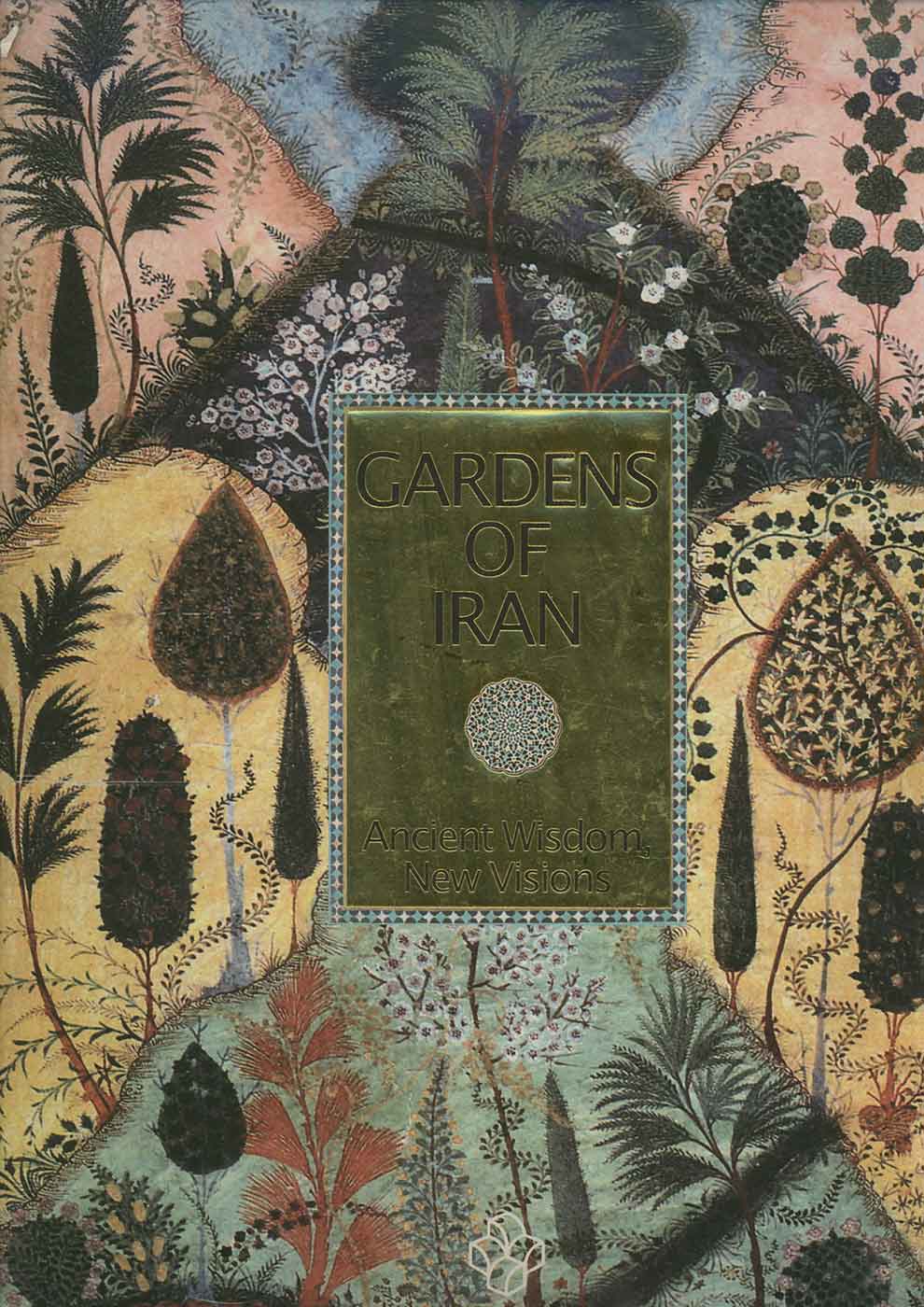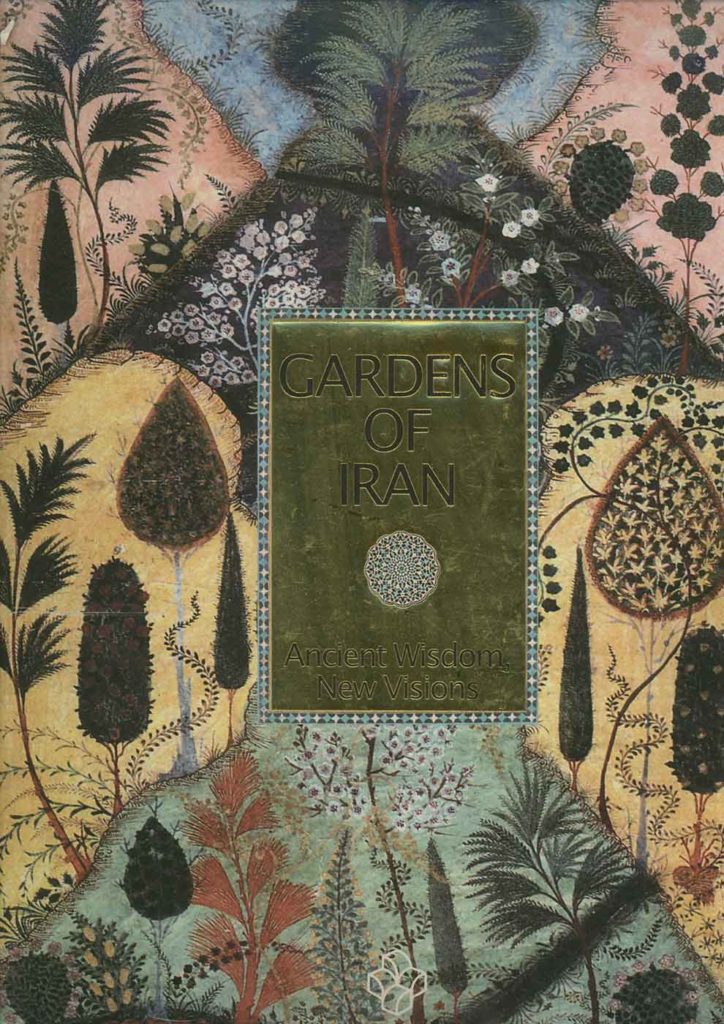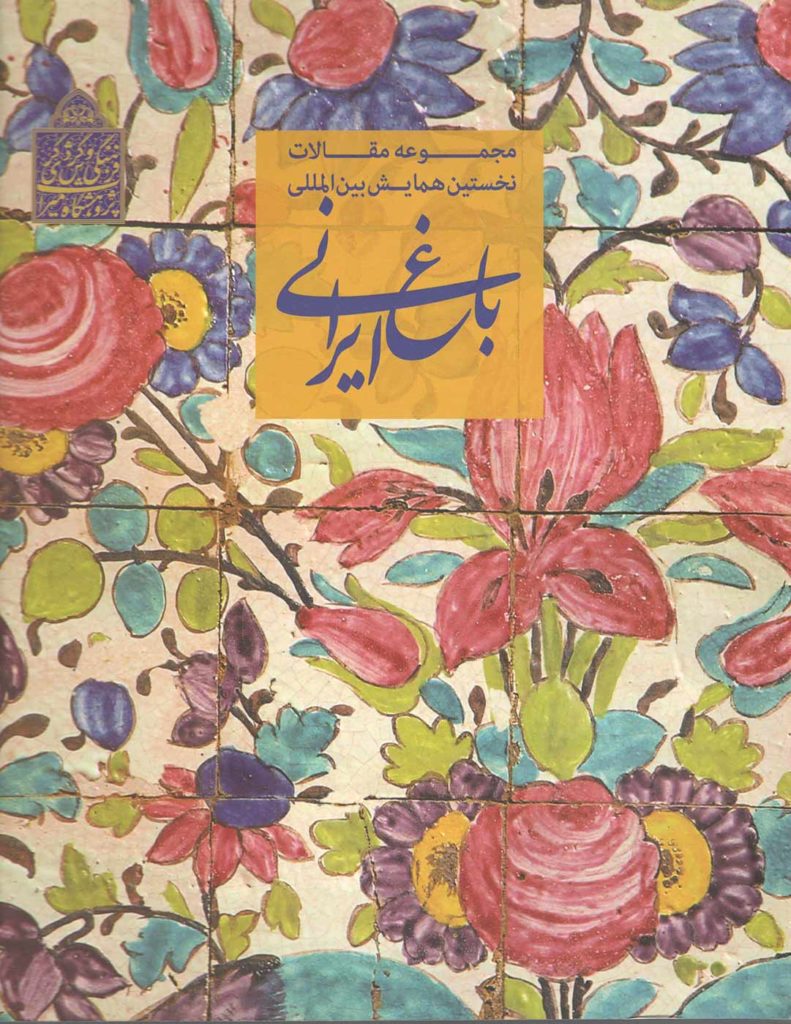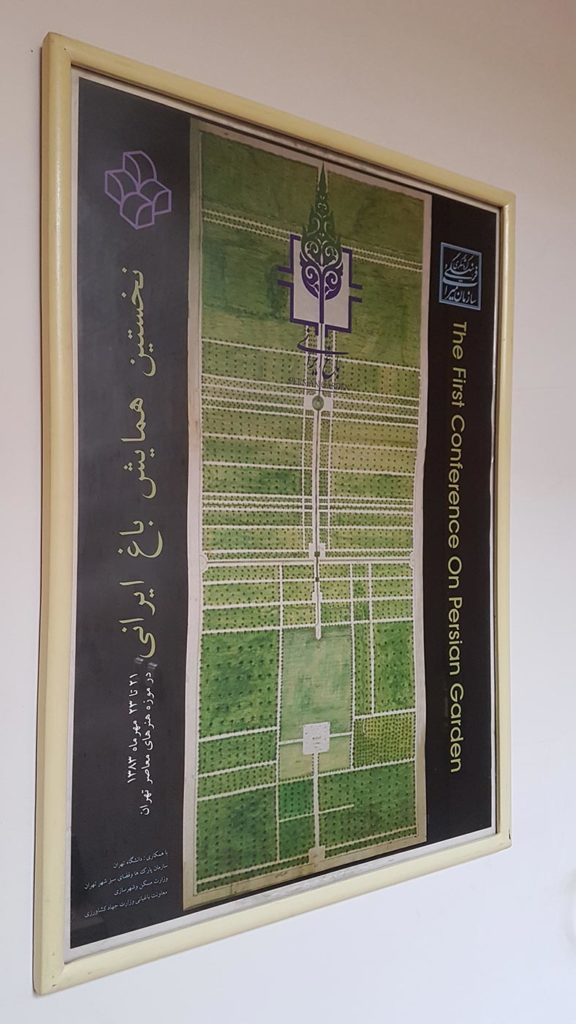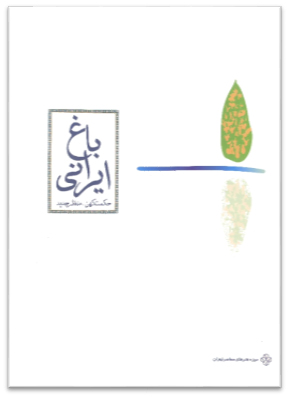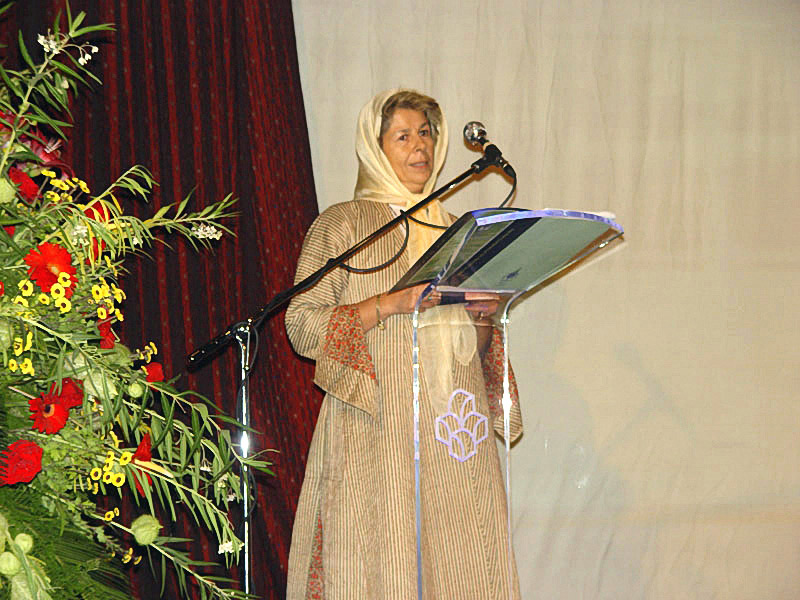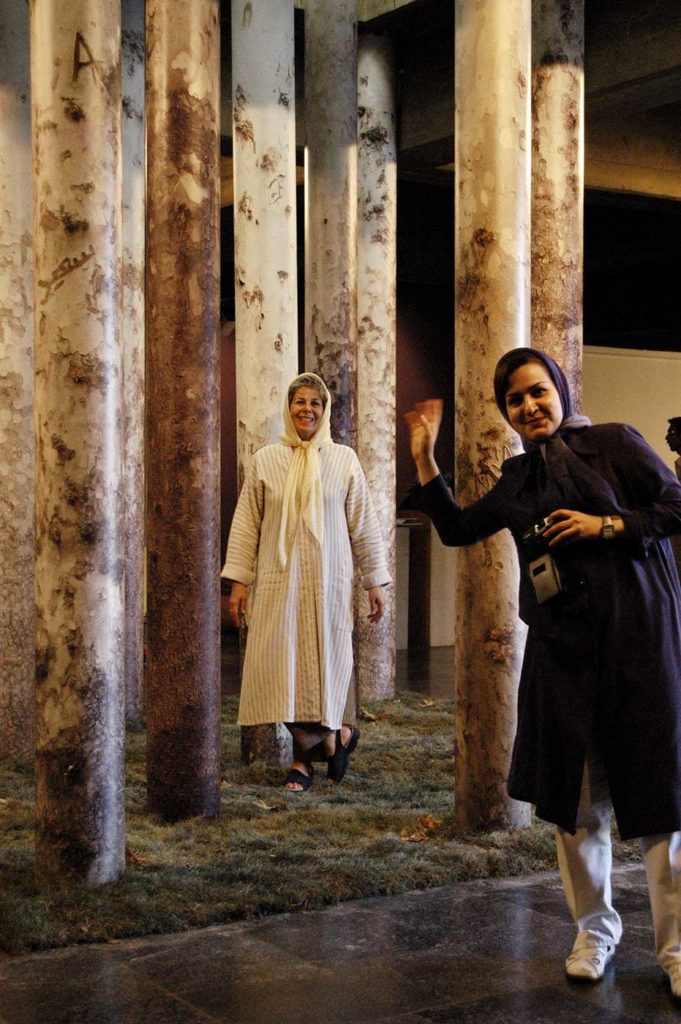Tehran Museum of Contemporary Art (TMOCA), September 2004- November 2004.
- Faryar Javaherian, curator
- Azadeh Shahcheraghi, assistant curator
- Alireza Sami Azar, TMOCA Director
- Sponsored by TMOCA, Ministry of Housing and Urbanism, Statoil, Keshavarzi Bank
I first asked Abbas Kiarostami if he would be willing to participate in an exhibition with the theme of the Persian Garden and he replied that he would love to do so, and this was the first step in preparing my exhibition. I gathered thirty of our most famous artists for this exhibition asking them to create a work of art on the theme of the Persian Garden, and at the same time presented documents and drawings on seventeen classical gardens. It took me three years to prepare this exhibition which was the most visited in all of the history of TMOCA, whether before or after the revolution: 55 thousand tickets sold in two months. The catalog was immensely successful and old copies are now on sale on Amazon for $120 to $450! Sheila Blair and Jonathan Bloom wrote the introduction to the English catalogue, and two catalogues – one in Farsi and the other in English – were designed by Farshid Mesghali and printed in Iran with a very high quality. Unfortunately, it was not re-printed in spite of my many efforts.
I also convened an international conference on the Persian Garden and the proceedings finally got printed in a book which came out in 2017.
The Persian Garden is the earlthy manifestation of the paradigmatic image of paradise which exists in the « Imaginal World » and has always been in the archetypal memories of the Iranian people. As Upham Pope Said : « Every Iranian has a garden in aa corner of his mind ». The mytic relation with which Iranian nurture water, trees and fflowers, clearly shows that the persian garden is a sacred realm.
The charisma of the Persian garden is deeply rooted in Iran’s most ancient past and dates back to the beginning of agriculture and irrigation. The Persian garden is the elaborate product of a creative people living in a hostile environnement, devising a poetic realm for sacred rituals and royal ceremonies. It is also a magnificent expression of the idea that water could be drawn fron the innermost layers of the feverish desert earth, running underground for long stretches to emerge from a fountain in the middile of a garden.
The manifestation fo the ancient paradise-garden image can be seen in all of the fields of the Persian art : in poetry, calligraphy, pottery and ceramicss, carpets, miniatures, architecture and even in the planning of cities such as Qazvin, Isfahan ans Chiraz. Our art history is made up of a chain of links that are closely interwoven and strongly bound, passing from one generation to the next; each link borrowing from the previous ones. The aim of this exhibiton is to revive these links and to continue this process.
The Tehran Museum of Contemporay Art is taking a fresh look at the garden paradigm in order to reveal its hidden meaning in the works of renowned contemporary artists. Seven classical Persian Gardens in the various cities of Iran are being exhibited through architectural drawings, historic, documentary and aerial phtographs, and prominent garden scholars have written about them for the catalogue.
In the historic section of the Exhibition, twenty pieces, from the Achaemenid to Qajar period, have been collectd to present a concrete feeling of the garden paradigm in other arts.
The major part of this exhibition shows the contemporary art by most famous Iranian artists : painting, video art, installation, performance art and photo art. This section of the exhibition shows the contemporary artists’ vision of the garden paradigm in which their creative eye has captured the essence of the garden and all of its constituent elements : water, light, trees, birds, people and growth…
Today the splendor and joy which emanated from our gardens have vanished. This exhibition attempts to catch glimpses of the exhilarating and peaceful mood of these lost gardens. The collection of works gathered in the Museum is a joyful invitation into the eternally green gardens of the iranian artists’ souls, where the image of paradise is still fresh.
Faryar Javaherian, Curator.
